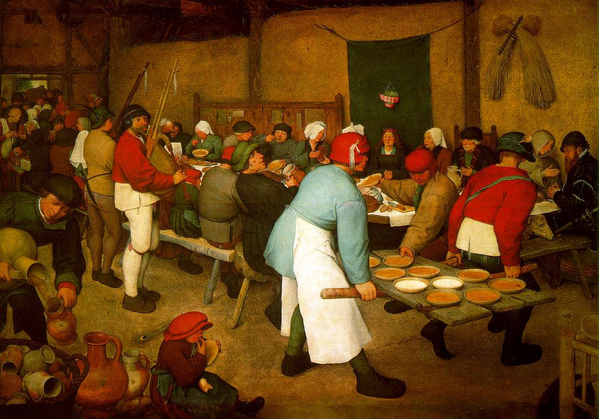Flanders Beer Trail 2: No Boon of contention in classic lambic brewery
Added: Tuesday, July 2nd 2013

Frank Boon is a man of surprises. “I don’t make sour beer,” he says firmly. But doesn’t he brew lambic and gueuze, the famously sour Belgian beers?
“My beers are acidic, not sour,” he insists. “I brew in the winter and the beers are not sour.” He says he aims for less acidity than Champagne and reminds me that lambic is called “the Champagne of Brussels”.
I accept he doesn’t make sour beer. But then comes the next surprise as he leads the way into a modern brewhouse with all the familiar stainless-steel vessels – mash tun, lauter tun and kettle – you expect to find in a conventional brewery. Aren’t lambic breweries meant to be slightly decrepit, with creaking wooden vessels, cobwebs and spiders?
Frank says the original brewhouse failed to meet the demands of modern Health & Safety officers. The site is a former iron foundry and in 2011 Frank set about building a new facility that was finished two years later. It was opened by Herman Van Rompuy (pictured left, above, with Frank), a former Belgian prime minister, now President of the European Council and, most importantly, an old friend of Frank’s. In Belgium, given the importance of the brewing industry, politicians aren’t nervous of being filmed with beer in their hands.
Frank takes me from the new facility to a room under the eaves and points to the large open metal pan that covers the floor. It’s his koelschip or cool ship, what he calls “the signature of lambic brewing”. It’s here, when the pan is filled with hopped wort from the brewhouse, that the route to lambic begins.
Wild yeasts float in through the eaves of the roof and impregnate the liquid, attacking the sugars in the wort. Lambic brewers are grouped in the Senne Valley region of Belgium, with Brussels at its centre. Research at the University of Leuven has identified two main strains of Brettanomyces yeast that impact on the creation of lambic, labelled bruxellensis and lambicus, but in total there are some 35 yeasts involved in the production of this most idiosyncratic of beer styles, some of which create a film on top of the fermenting beer similar to the flor in sherry.
Once, all beer was made by spontaneous fermentation. It’s only in recent time that scientists, including Louis Pasteur, were able to unlock the mysteries of an organism known as “god is good” as a result of its magical ability to turn sugary liquids into alcohol. As soon as both commercial ale and lager brewers were able to use carefully cultured yeast strains, the days of lambic brewing were numbered.
They fell like dominoes in the 20th century and it took a small band of dedicated brewers, including Frank Boon, to save and revive its fortunes. The Boon – pronounced Bone – brewery is in the town of Lembeek, which may be the source of the name lambic. There are many theories. Some suggest it stems from the period of Spanish rule when farmers brewed beer and also distilled genever or gin: the Spanish for distillery is alembic.
There’s been a lambic brewery in Lembeek since 1680. When the owner, René De Vits, decided to retire in 1977 he sold it to Frank Boon. Both were gueuze blenders: this means they didn’t brew beer but bought lambic from other brewers, matured it in oak vessels and then blended young and old beers to make gueuze. Gueuze – Frank prefers the spelling gueze – is the name given to a bottled and blended version of lambic. It’s the main type found in Belgium: straight lambic is rare.
Frank Boone’s new brewhouse has two mash tuns, two lauter or filtration vessels and one large boiling kettle. In accordance with the strict ordinances laid down by both Belgian and EU law for the production of lambic, Frank blends 60% malted barley with 40% unmalted wheat. He buys barley grown to his own specification and he calls the end result lambic malt. Pils malt, he says, has a fast level of protein degradation that doesn’t work well with wheat. Brewing water comes from a well on the site and is medium-hard.
He uses three times the amount of hops found in conventional beers, but they are aged hops, around three years old, and they have lost most of their bitterness. Frank and other lambic brewers are not looking for bitterness in their beers, and aged hops prevent infection and oxidation. Frank uses English Goldings and Styrian Goldings from Slovenia. A Muscat flavour in three year-old lambic comes from the hops, he says. Oxidised hops give a specific character to his beer, he adds, and “consistency is important”.
The hopped wort stays in the cool ship for a minimum of six hours – long enough, Frank says, for the wild yeast spores to feed voraciously on the sugars. Once fermentation is underway, the liquid is pumped to the maturation halls. Any notion that Frank Boon is not an authentic lambic brewer is dashed as soon as you enter the halls. These are the cathedrals of brewing, great oak tuns where the beer ages, matures and picks up further character from micro-flora trapped in the wood, and from the source of the vessels themselves: oak tuns or foudres obtained from wine, port, sherry or conventional beer makers will impart their particular character to the beer.
In common with all lambic brewers, Frank brews only in the winter months: in the summer, temperatures are too high and other, unwanted wild yeasts are in the air. As a result of the bad weather this spring and the late arrival of summer, he has been able to extend his brewing season.
Frank has a total of 117 foudres, ranging in size from 113 hectolitres to 13 hectos. Each cask is chalked with a letter to indicate the season the beer was brewed and a number to identify the precise brew. His casks come from wine makers, some from an old brewery in Nuremberg and more from Prince Luitpold’s brewery at Kaltenberg Castle, near Munich, where dark or Dunkel lager is made.
Just as Scotch whisky cannot be sold until it has aged for at least three years, there are equally strict rules about the labelling of lambic and gueuze. In 1991, the European Beer Consumers’ Union drew up an appellation contrôlée for lambic that laid down that it had to be fermented only with wild yeasts, and they had to include Brettanomyces bruxellensis and lambicus. Gueuze must be blended entirely of lambic and must be re-fermented in the bottle, without filtration, artificial carbonation, sweeteners or pasteurisation.
In 1997, the Belgian Confederation of Brewers drew up a ruling, as part of an application to the European Union, which supported the EBCU guidelines and added a proviso about the use of the term “old”. Any gueuze called “oud” in Dutch must contain a proportion of lambic that is three years old and have an average of not less than three years in wood and six months in bottle.
At Boon, lambic stays in the foudres for one, two or three years. Frank’s Oude Geuze (7%) is a blend of lambics of between 18 months, one and two years, with a small amount of three year-old. Oude Geuze Mariage Parfait (8%) is the pinnacle of the blenders’ art, mainly three year-old with between 4 and 5% young beer. He produces three versions of Kriek – lambic made with the addition of cherries: Kriek (4%),Oude Kriek (6.5%) and Kriek Mariage Parfait (8%).
Frank uses whole fruit, which is macerated and fermented in a tank before it’s added to the beer in oak. He also makes a small amount of Framboise (6%), raspberry beer, using the same technique. Frank was one of the driving forces behind the setting up of HORAL in 1999, a trade body representing most of the lambic brewers and which champions the cause of beer made in the traditional fashion, without artificial sweeteners or fruit juice.
The Oud Geuze has a delightful tart orange fruit note and a tangy and bitter finish. Mariage Parfait, a cloudy bronze beer, has spices and almonds on nose and palate and a dry, lingering, gently acidic finish. The Krieks all have a high level of fruit and are delicious, bursting with tart fruit and bone-dry finishes.
Frank produces 15,000 hectolitres a year and has substantial export sales due to a tie-up with the large Belgian ale brewer, Palm. Palm has a 50% stake in Boon and distributes his beers world-wide along with its own brands: it also owns Rodenbach.
Frank is in brewing for the long haul. He has been joined by his son, Jos, who studied under the renowned Professor Freddy Delvaux at Leuven University. A sign outside the brewery announces: “We are an authentic brewery”. Long may it remain so.
*Brouwerij Boon, 65 Fonteinstraat, 1502 Lembeek (Halle). 02 356 66 44. www.boon.be
Images courtesy beertourism.com
http://belgium.beertourism.com
Below, Peter Bruegel the Elder's The Peasant Wedding: the drink being poured is probably lambic.








